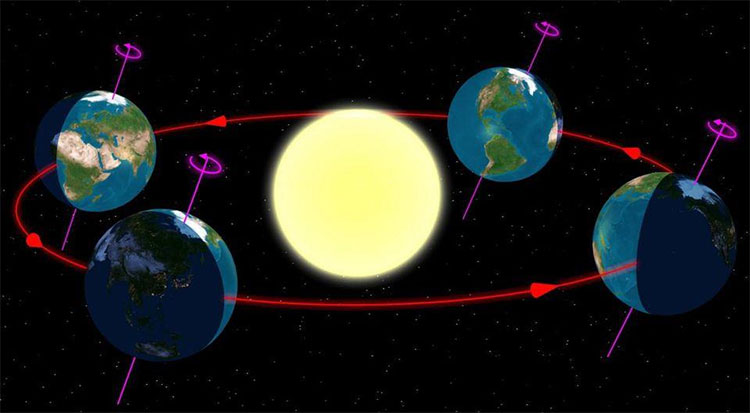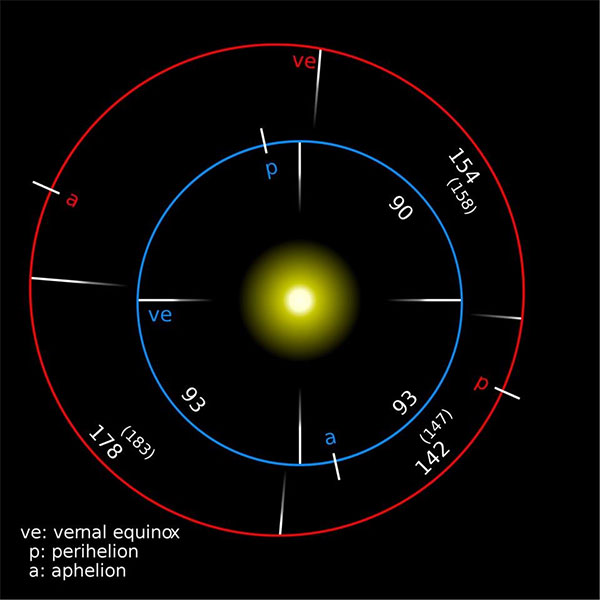A day is never 24 hours
People have long divided 1 day into 24 equal parts, which is the length of an hour. However, in fact, one day never gets 24 hours.

One of the first watches produced by Christiaan Huygens, operates on the principle of a single pendulum having a fixed time.This watch is still preserved today in Rijksmuseum, Amsterdam, Netherlands.

The Earth takes 23 hours 56 minutes and 4.09 seconds to spin 360 degrees around its axis.Our planet also moves relative to the Sun.That's why the definition of a day becomes so complicated because the Sun's movement must be included.

All planets in the Solar System have seasons defined by the tilt of the axis of rotation, the ellipse of the orbit or a combination of both.These factors also determine the length of a day as well as the change in the time of sunrise and sunset.Therefore, the Earth needs to rotate 360 degrees a little more so that the Sun 'grows' in the same position from day to day.

When the Earth turns 360 degrees if it is considered a day, we only have 23 hours 56 minutes and 4 seconds.It is the length of an astronomical day, completely different from a normal day we often understand (the day of the Sun).If the Sun's 'rising' position is constant day by day, the Earth needs to rotate a bit (about 361 degrees) to compensate for the Sun's movement.In the figure is the ratio of Earth and Mars in proportion, when viewed from the north of the Solar System.

The Earth's journey around the Sun is 940 million kilometers long.An additional 3 million kilometers of Earth moves in space every day so that if only 360 degrees are rotated, the Earth will not see the Sun in the same 'rising' position in the sky from day to day.This is why a day must be longer than 23 hours 56 minutes (the time required to shoot 360 degrees).

During a 365-day year, the Sun moves not only up and down in the sky as determined by the axis of the Earth's tilt, but also moves forward and backward due to the Earth's elliptical orbit when rotated. around the Sun. When both effects are combined, the graph shows the deviation of the Sun motion called Annalemma with figure 8. The image was collected from 52 images selected from observations in Mexico for a year. calendar.

The graph of the deviation of the Sun motion has figure 8 due to the influence of the Earth axis and the elliptical orbit in the Earth's space around the Sun.

However, this is still not good, because the Earth moves unevenly in its orbit.Specifically, in January, the Earth will move faster and in early July, the Earth will move more slowly.As for Earth's orbit around the Sun when far away, the Earth moves more slowly, but when near, the Earth moves faster.Earth velocity ranges from 29.3 km / s to 30.3 km / s.On average, every day we have to fluctuate for another 4 seconds.

Planets move in orbit as shown by conserving angular momentum.The Earth most often moves near the Sun around January 3, while in early July we are farther away from the Sun.

The time equation is determined by the orbital shape of the planet's motion and its axial inclination.In the months when the Earth was closest to the Sun, it moved the slowest.That is the reason the Annalemma chart is misplaced, while on December 12, the chart is extended because the Earth is closer to the Sun.Note, the time equation has a zero derivative, so the latitude observer will see a 24-hour day.

When the Earth rotates around its axis and orbits the Sun in an ellipse, the Sun's position in the sky changes from day to day in this particular shape.Analemma's tilt will correspond to the time of day.The position of the Sun will depend on the latitude of the viewer.However, at the same time every day, at the same latitude, we will observe the asymmetrical figure 8 as the image.

Finally, every year, depending on latitude, we have 4 days that lasts 24 hours exactly.
- Great benefit of standing 3 hours a day
- Sleeping for 9 hours, sitting 7 hours a day makes you die early
- Science finds the exact number of hours of sleep every night making you the happiest
- Planting techniques and care of flowers for ten hours
- Music player can operate continuously for 80 hours
- 5 reasons why you sleep more than 10 hours a day and still yawn
- Schools should not start school before 8:30
- A lot of people are sleeping wrongly, they don't know the way to the cemetery is getting shorter
- Sleep enough hours, wrong time still die early!
- How to eat before and after surgery?
- Is hiccups sick?
- New staph can cause death in 72 hours
 'Fine laughs' - Scary and painful torture in ancient times
'Fine laughs' - Scary and painful torture in ancient times The sequence of numbers 142857 of the Egyptian pyramids is known as the strangest number in the world - Why?
The sequence of numbers 142857 of the Egyptian pyramids is known as the strangest number in the world - Why? Miracle behind the world's largest stone Buddha statue
Miracle behind the world's largest stone Buddha statue What is alum?
What is alum?